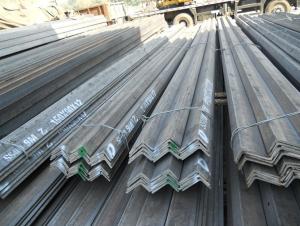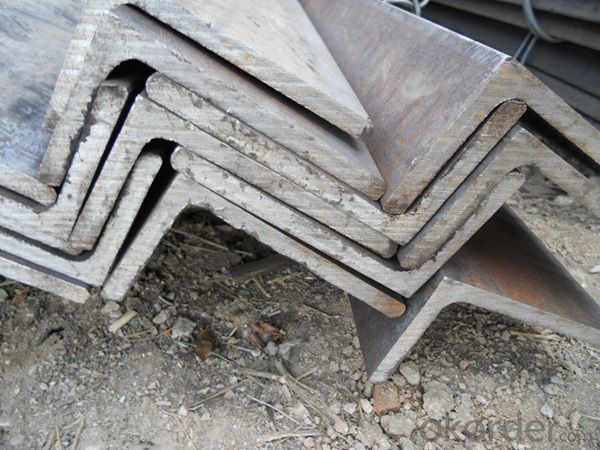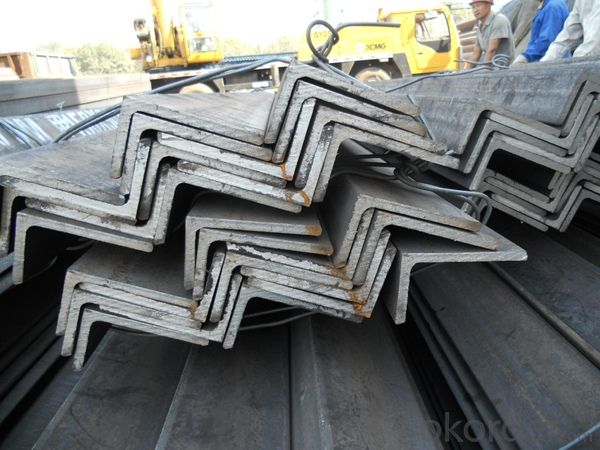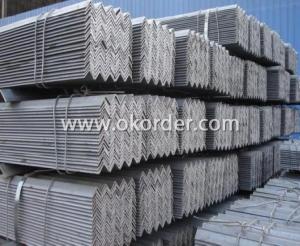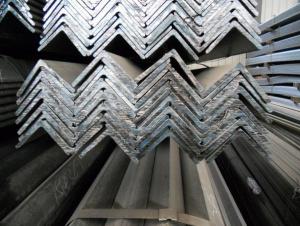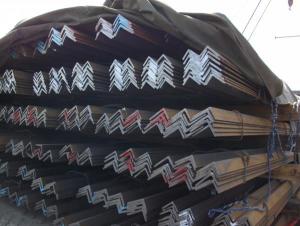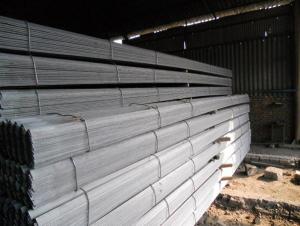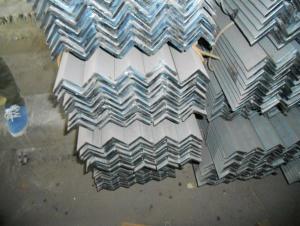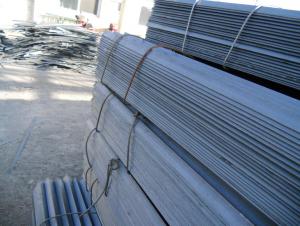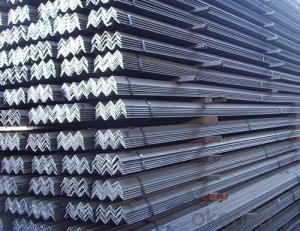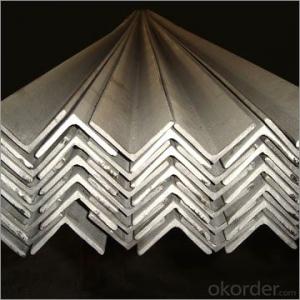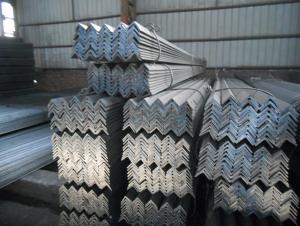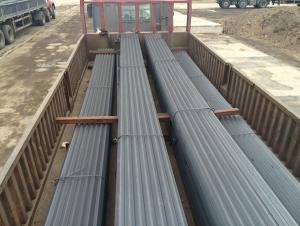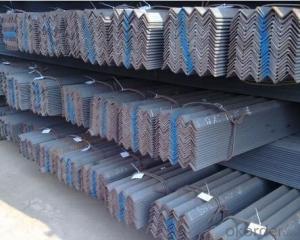Q345B angle, angle steel, galvanized angle steel
- Loading Port:
- Tianjin
- Payment Terms:
- TT or LC
- Min Order Qty:
- 25 m.t
- Supply Capability:
- 1000 m.t/month
OKorder Service Pledge
OKorder Financial Service
You Might Also Like
Specification
Product Description:
OKorder is offering Q345B angle, angle steel, galvanized angle steelat great prices with worldwide shipping. Our supplier is a world-class manufacturer of steel, with our products utilized the world over. OKorder annually supplies products to European, North American and Asian markets. We provide quotations within 24 hours of receiving an inquiry and guarantee competitive prices.
Product Applications:
Q345B angle, angle steel, galvanized angle steel are ideal for structural applications and are widely used in the construction of buildings and bridges, and the manufacturing, petrochemical, and transportation industries.
Product Advantages:
OKorder's Q345B Small angle, angle steel, galvanized angle steel are durable, strong, and resist corrosion.
Main Product Features:
· Premium quality
· Prompt delivery & seaworthy packing (30 days after receiving deposit)
· Corrosion resistance
· Can be recycled and reused
· Mill test certification
· Professional Service
· Competitive pricing
Product Description:
Angle called angle, the steel strip is perpendicular to each other on both sides into angular.Divided into equilateral angle steel and ranging from side angle. Two equilateral angle steel edge width is the same. The specification is expressed by edge width * width * thick edgenumber of millimeters. Such as "/ 30 x 30 x 3", namely that equilateral angle steel edge widthof 30 mm, 3 mm thick edge. Can also be used to model representation, model is the wideangle 3# cm, such as. The model does not represent the same type in different edge thickness size, thus in the contract and other documents on the angle of the edge width, edgethick size fill in complete, avoid alone represented by type. Hot rolled equilateral angle steelspecifications for 2#-20#. Angle according to the different needs of structure composed of a variety of stress components, can also be used as a component of the connections between the. Widely used in a variety of architectural and engineering structures, such as beams,bridges, towers, hoisting and conveying machinery, ships, industrial furnace, reactor,container frame and warehouse.
Mainly divided into equilateral angle steel, equilateral angle steel two categories, includingunequal angle can be divided into equal thickness and unequal thickness ranging from two.
Angle specifications with the side length of the size and edge thickness. At present, the domestic steel specifications for 2 - 20 cm in length, number of numbers, the same horn steel often have 2 - 7 different edge thickness. The actual size and inlet angle marked on both sides of the thickness and indicate the relevant standards. The general length of more than 312.5px for large angle steel, 312.5px - 125px for the medium angle, length of 125px for smallangle.
Inlet and outlet angle steel orders generally required the use specifications in the steel,carbon structural steel grades as appropriate. Is the angle in addition to standard number, nospecific composition and performance series.
Angle steel delivery length is divided into fixed length, size two, domestic steel length range is3 - 9m, 4 12M, 4 19m, 6 19m four range according to different specifications. Japanese steellength ranges from 6 to 15m.
Section of unequal angle height according to the long edge of the width to calculate the non equilateral angle steel. Refer to section angle and side length is not equal to the steel. Is a kind of angle steel. The length from 25mm * 16mm to 200mm * l25mm. By the hot rolling mill rolling in. General scalene angle steel specifications: thickness of 4-18mm / 50*32-- / 200*125
Equilateral angle steel is widely used in all kinds of metal structures, bridges, machinery manufacturing and shipbuilding industry, all kinds of architectural and engineering structures,such as beams, bridges, towers, hoisting and conveying machinery, ships, industrial furnace,reactor, container frame and warehouse etc.
FAQ:
Q1: Why buy Materials & Equipment from OKorder.com?
A1: All products offered byOKorder.com are carefully selected from China's most reliable manufacturing enterprises. Through its ISO certifications, OKorder.com adheres to the highest standards and a commitment to supply chain safety and customer satisfaction.
Q2: How do we guarantee the quality of our products?
A2: We have established an advanced quality management system which conducts strict quality tests at every step, from raw materials to the final product. At the same time, we provide extensive follow-up service assurances as required.
Q3: How soon can we receive the product after purchase?
A3: Within three days of placing an order, we will begin production. The specific shipping date is dependent upon international and government factors, but is typically 7 to 10 workdays.
Images:
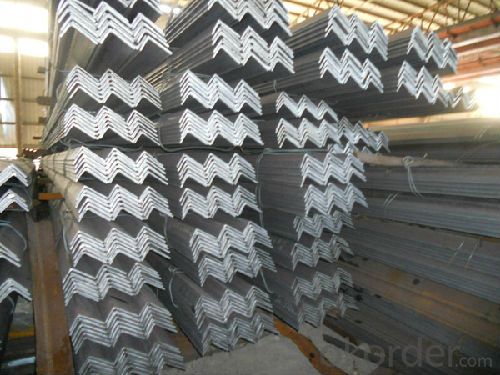
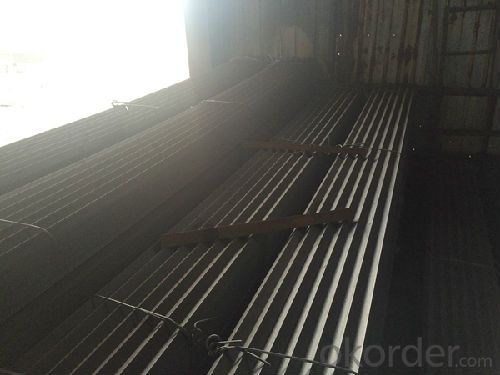
- Q: Can steel angles be used in staircases?
- Yes, steel angles can be used in staircases. Steel angles are commonly used as structural elements in construction due to their strength and versatility. In staircases, steel angles can be used to provide support and stability to the steps and handrails. They are often used as stringers, which are the inclined structural members that support the treads and risers of the staircase. Steel angles can also be used to reinforce the connections between the treads and risers, ensuring the structural integrity of the staircase. Additionally, steel angles can be used as handrails or balusters, providing a secure and durable railing system. Overall, steel angles offer a reliable and cost-effective solution for constructing staircases that can withstand heavy loads and meet the necessary safety standards.
- Q: Are steel angles cost-effective?
- Yes, steel angles are cost-effective. Steel angles are widely used in various industries and construction projects due to their versatility and durability. They are highly cost-effective because they are easy to manufacture, readily available, and have excellent strength-to-weight ratios. Steel angles also have a long lifespan, reducing the need for frequent replacements or repairs, which can save on maintenance costs in the long run. Additionally, steel angles are recyclable, making them an environmentally friendly and sustainable choice. Overall, the cost-effectiveness of steel angles makes them a popular choice for structural and architectural applications.
- Q: Can steel angles be used for foundation supports?
- Yes, steel angles can be used for foundation supports. Steel angles are commonly used in construction projects to provide structural support and stability. They have the ability to withstand heavy loads and provide durability, making them suitable for foundation supports. Steel angles can be easily connected to other structural components, such as beams or columns, to create a stable foundation system. Additionally, steel angles can be customized and fabricated to specific sizes and dimensions, ensuring that they meet the specific requirements of the foundation design.
- Q: What are the different connection methods for steel angles?
- When it comes to connecting steel angles, there are several different methods available, each depending on the specific application and structural requirements. Some commonly used methods include: 1. Welding: Steel angles can be connected through welding, which involves melting the adjacent surfaces of the angles and fusing them together using a welding electrode. This method is known for providing high strength and rigidity, but it does require skilled labor and specialized equipment. 2. Bolting: Another frequently used method is bolting, where the angles are fastened together using bolts and nuts. This method offers the advantage of adjustability and ease of removal, making it suitable for situations where disassembly may be necessary. 3. Riveting: Riveting is a traditional method that involves inserting a metal rivet through holes in the angles and deforming the end to secure it in place. While this method provides a strong and permanent connection, it can be time-consuming and labor-intensive. 4. Adhesive bonding: A more modern approach is adhesive bonding, which involves applying a high-strength adhesive to the contact surfaces of the angles and then joining them together. This method is lightweight, flexible, and resistant to corrosion. 5. Mechanical fasteners: Various mechanical fasteners, such as self-tapping screws, self-drilling screws, and blind rivets, can be used to quickly and easily connect steel angles without the need for additional tools or equipment. When selecting the appropriate connection method for steel angles, it is crucial to consider factors such as load requirements, structural stability, corrosion resistance, and ease of installation.
- Q: What are the common design codes and standards for steel angles?
- The specific application and industry requirements determine the common design codes and standards for steel angles. Various recognized design codes and standards are applicable to steel angles, including: 1. The American Institute of Steel Construction (AISC) offers design specifications and standards for structural steel construction, including angles. The AISC Steel Construction Manual provides guidance on designing steel structures and selecting steel angles. 2. The American Society for Testing and Materials (ASTM) develops and publishes technical standards for different materials, including steel. ASTM A36/A36M is a commonly referenced standard for carbon structural steel, including angles. It specifies requirements for chemical composition, mechanical properties, and testing methods. 3. The European Norm (EN) specifies technical delivery conditions for structural steel products. EN 10025-2 covers non-alloy structural steels, including angles, and provides requirements for chemical composition, mechanical properties, and tolerances. 4. The British Standards Institution (BSI) publishes standards related to steel angles, such as BS EN 10056-1. This standard details the dimensions and tolerances for hot-rolled equal and unequal steel angles. 5. The Canadian Standards Association (CSA) provides guidance for steel design and construction in Canada. CSA G40.21 is a widely used standard that covers requirements for general structural steel, including angles. It is important to note that these examples represent common design codes and standards for steel angles. Depending on the project and location, additional local or industry-specific codes and standards may need to be considered. Consulting a structural engineer or referring to relevant design codes and standards is crucial for ensuring compliance and safety in steel angle design and construction.
- Q: What are the dimensions of a standard steel angle?
- The dimensions of a standard steel angle can vary depending on the specific requirements and standards, but generally, it is a L-shaped structural steel member with equal or unequal legs. The standard dimensions typically include the overall length, width, and thickness. For example, a common standard steel angle might have an overall length of 20 feet, a width of 2 inches, and a thickness of 1/4 inch. However, it is important to note that the dimensions can vary based on the specific application and industry standards.
- Q: How do you determine the center of gravity for a steel angle?
- The center of gravity for a steel angle can be determined by finding the point where the weight of the angle is evenly distributed. This can be done by balancing the angle on a pivot point or by using mathematical calculations based on the dimensions and weight distribution of the angle.
- Q: Are steel angles suitable for high-rise buildings?
- Yes, steel angles are suitable for high-rise buildings. They are commonly used as structural elements in high-rise construction due to their strength, durability, and ability to bear heavy loads. Steel angles provide stability and support to the building structure, making them an ideal choice for high-rise construction projects.
- Q: What are the design considerations for using steel angles in architectural applications?
- Some design considerations for using steel angles in architectural applications include structural stability, load-bearing capacity, aesthetic appeal, corrosion resistance, and ease of installation. Steel angles are commonly used to provide support, reinforcement, and stability to various architectural elements such as beams, columns, and frames. The selection of the appropriate size, thickness, and grade of steel angle is crucial to ensure the structural integrity and safety of the building. Additionally, architects may consider the visual impact of steel angles, as they can be exposed or concealed depending on the design intent. The corrosion resistance properties of the steel angles should also be taken into account, especially in applications where exposure to moisture or harsh environments is expected. Lastly, the ease of installation and compatibility with other building materials should be considered to streamline the construction process.
- Q: Can steel angles be cut to custom lengths?
- Yes, steel angles can be cut to custom lengths. Steel angles, also known as angle irons, are versatile structural components commonly used in construction and manufacturing. They are available in various standard sizes, but they can also be customized to meet specific length requirements. This can be achieved by using cutting tools such as saws or shears to trim the steel angle to the desired length. The ability to cut steel angles to custom lengths makes them suitable for a wide range of applications, as they can be tailored to fit specific design needs.
Send your message to us
Q345B angle, angle steel, galvanized angle steel
- Loading Port:
- Tianjin
- Payment Terms:
- TT or LC
- Min Order Qty:
- 25 m.t
- Supply Capability:
- 1000 m.t/month
OKorder Service Pledge
OKorder Financial Service
Similar products
Hot products
Hot Searches
Related keywords
